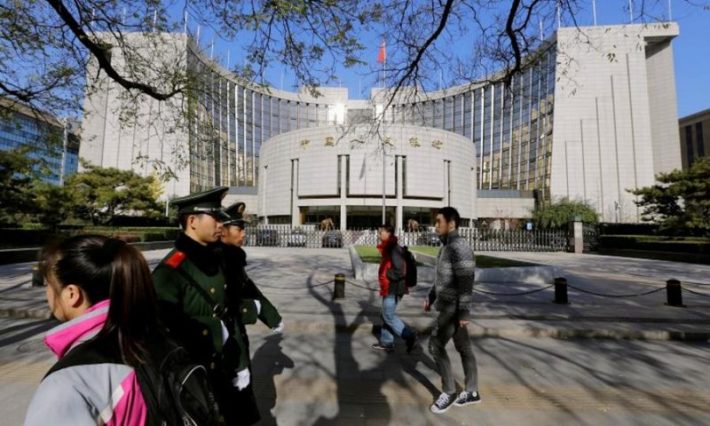China’s central bank said on Thursday it expects to reduce the number of high-risk banks to under 200 by 2025, as the country makes efforts to defuse financial risks and seek stability.
The number of banks categorised as ‘high-risk’ by the People’s Bank of China (PBOC) has fallen to 316 at the end of 2021 from the peak of 649 in the third quarter of 2019, it said in a statement.
High-risk banks now account for 1.04% of all Chinese banks, according to the PBOC.
Over the past few years, China has pushed to clamp down on systemic risks in “shadow banking”, which have been a major funding source for weak or highly-leveraged companies unable to secure loans from traditional banks.
By enforcing new asset management rules and cracking down on violations in inter-bank lending, leveraging, and off-balance-sheet activities, China reduced the scale of shadow banking by 25 trillion yuan ($4 trillion) from 2017 to 2021, according to the central bank’s statement.
In mid-2019 there were reports that some small rural and city commercial banks in China faced serious credit risks and were technically on the brink of bankruptcy.
Reuters reported in late May 2019 that over a dozen small lenders had not published their annual or quarterly reports in 2019. They included the Bank of Jinzhou and Bank of Jilin, which failed to respond to media enquiries at that time.
Baoshang Bank Crisis
A key concern was Baoshang Bank, which was taken over by the PBOC and banking regulators in mid-2019. Baoshang had been described as serving as an “ATM” for billionaire Xiao Jianhua’s Tomorrow Holdings conglomerate.
The government had originally hoped to find a strategic investor to acquire Baoshang and use the equity premium to fill its funding gap. However, no strategic investor was found, so financial authorities decided to establish a new bank to be its successor and provided a Standing Lending Facility of 23.5 billion yuan for liquidity support to the bank.
In April 2020, the PBOC said that the newly established Mengshang Bank would take over Baoshang Bank’s remaining operations, assets and liabilities in Inner Mongolia Autonomous Region, while Hong Kong-listed Huishang Bank would take over Baoshang’s four branches in other regions.
Analysts said the Baoshang Bank incident would have a negative impact on the market as investors were concerned about worsening quality of assets and capital adequacy of certain small- and medium-sized Chinese banks.
So, in November 2020, the China Banking and Insurance Regulatory Commission agreed that Baoshang Bank should start bankruptcy proceedings.
It became the first commercial bank to be declared bankrupt in China.
In the 15 months since, regulators have worked hard to reduce risks in the banking sector and confront corporate entities such as China Evergrande, which had massive debts, allegedly totalling more than $300 billion.
• Jim Pollard and Iris Hong with Reuters
This report was updated with further details on March 4, 2022.
ALSO ON AF:
Chinese Developers Face Huge Debt Maturities in 2022
How China Evergrande’s Debt Troubles May Pose a Systemic Risk
China scolds its reckless corporate borrowers: No more debt!
Baoshang Faces Bankruptcy, China Banking Regulator Says






















